The Daily Northwestern
PAGES 7-10




PAGES 7-10



Revelle not seeking reelection in April City Council race
By ISAIAH STEINBERG daily senior staffer
@isaiahstei27
As Illinois’ 2025 consolidated general election approaches, mayoral, City Council and school board hopefuls have one month remaining before the deadline to le nomination petitions. In the 7th Ward, the race for an open seat has already begun. ree candidates are currently vying to ll an empty 7th Ward City Council position following Ald. Eleanor Revelle’s decision not to seek a third term.
Public Safety Civil Service Commission Acting Chair Kerry Mundy, real estate broker and community activist Mary Rosinski and a orney Parielle Davis have announced their candidacy to be the 7th Ward’s alderperson.
e city’s consolidated election will take place on April 1 A primary to narrow the eld would only occur if ve or more candidates qualify for a councilmember race, and would take place Feb. 25
Evanston’s 7th Ward covers Northwestern and Ryan Field, the University’s controversial new football stadium which is currently under construction. Of the three candidates, Mundy is alone in his support of the Rebuild Ryan Field project, which has faced criticism from residents due to noise, traffic and environmental concerns.
“ e reason I support the stadium is because it has good bene ts for Evanston, as long as the needs of the residents are met,” Mundy said. Rosinski, a member of the city’s Parks and Recreation Board, opposes the commercial rezoning of Ryan Field for its potential to decrease nearby property values, she said. In an interview with e Daily, Rosinski called the plan to host concerts and the zoning negotiation process “a disservice to all the residents.”
She proposed changing the city’s spending rules, which currently allows city o cials to spend up to $25,000 without Council approval, so that the city can only spend that money on necessary purchases. Davis, meanwhile, opposes aspects of the Ryan Field plan due to local disruptions such
AUDIO/ e Weekly
e Daily’s editors discuss University policies and homelessness on new installment of e Weekly

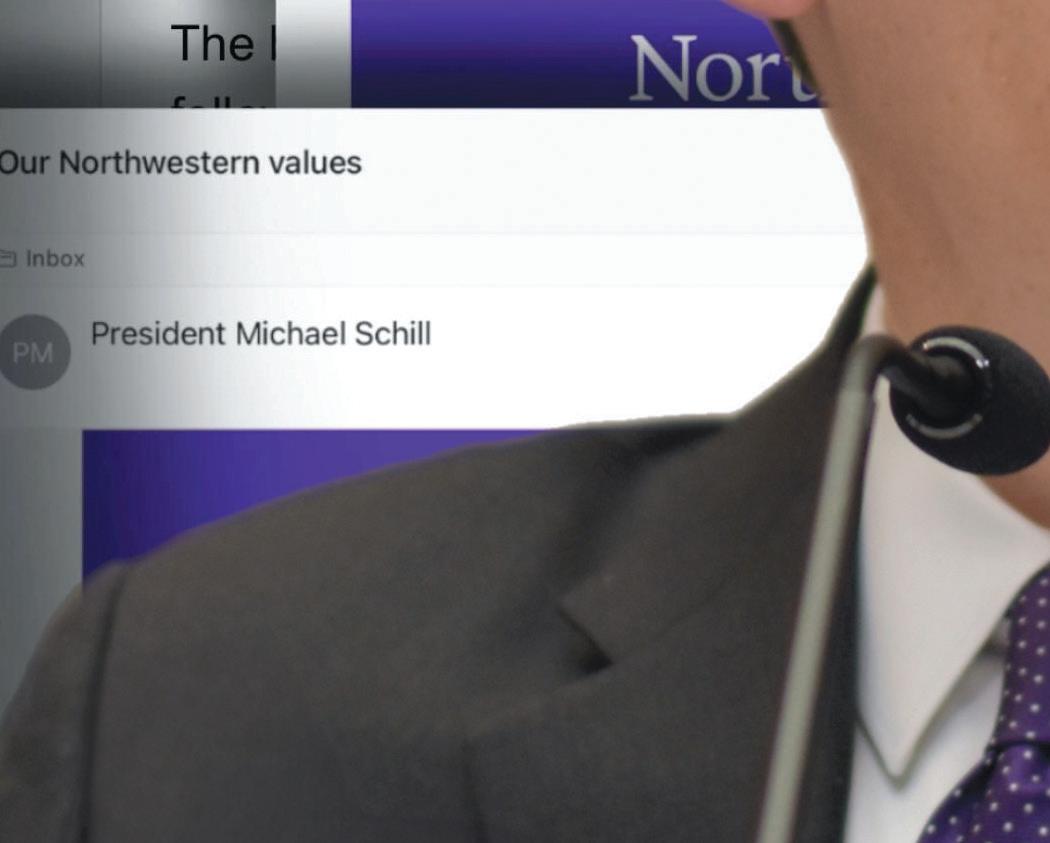
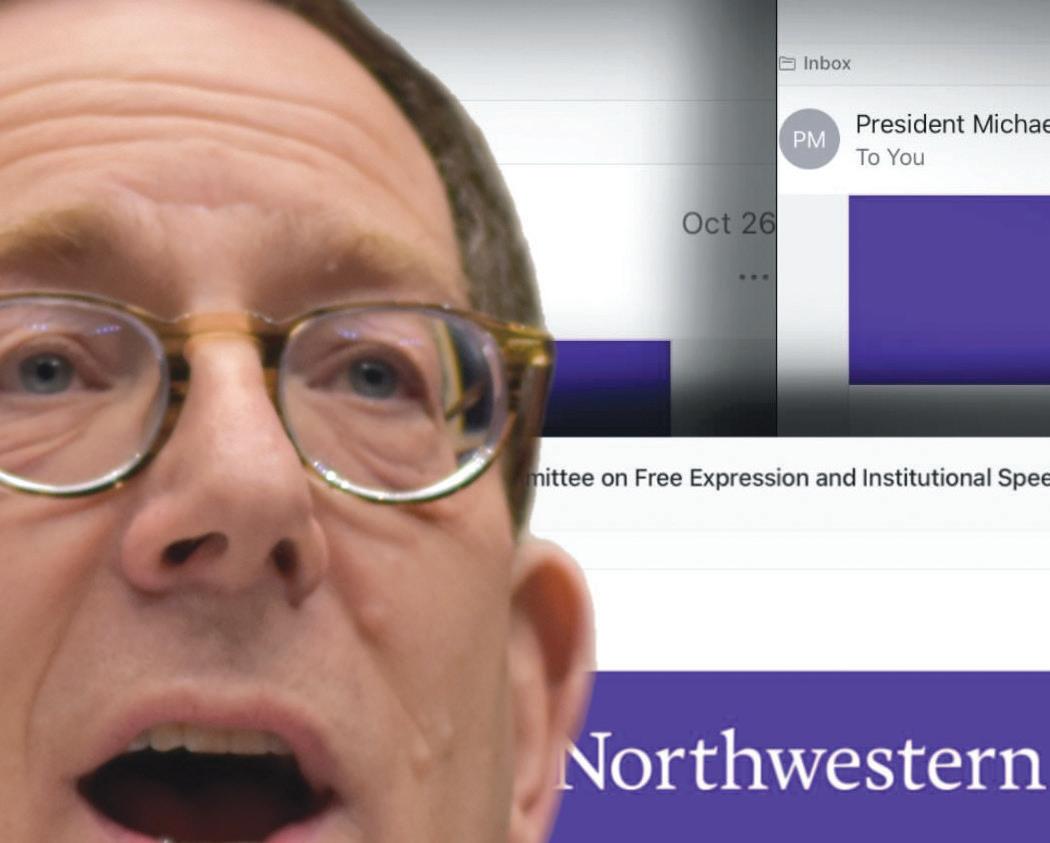








By JERRY WU daily senior staffer @jerrwu
Northwestern announced it will begin to limit official
statements on political ma ers except those that directly a ect the University’s operations on Friday, joining a growing number of universities nationwide that have adopted similar policies.
By SHUN GRAVES
daily senior staffer
@realshungraves
Like the others he’s steered this year, John Fervoy launched Tuesday’s Evanston Rides with a flamboyant dash of biker boosterism.
“Welcome, sexy bikers!” he told the more than two dozen assembled at Fountain Square.
e move came almost two months after the President’s Advisory Commi ee on Free Expression and Institutional Speech, convened by University President Michael Schill in February, submi ed a statement
summarizing its examination of NU’s free speech policies. e original statement — a product of over six months of discussions — appears to
Started earlier this year by the Downtown Evanston organization, the program aims to o er cyclists regular social rides around the city. Open to riders of all levels, Evanston Rides scheduled 12 events this year, with half led by the ETA and called the Adult Social Ride.
“We aspire to have a massive presence here to let people know the power and the sexiness of cyclists,” Fervoy said.
Evanston cyclist Mindy Ferber, meanwhile, brought a touch of the divine: “ e Bike Goddesses,” her neon jacket
e Evanston Transit Alliance founder then led the cyclists on a roughly hourlong course through northwest Evanston. For Evanston Rides, the route marked one last trip — at least for this year’s weekday adult program. e last Saturday family ride will take place on Oct. 26

declared.
It refers to a local bike group of 35 women who have cycled the Evanston area for decades, she said. Tuesday marked her fourth time at Evanston Rides, and she praised the program as “recreational” and not too fast.
The program is sexy for downtown Evanston, too.
Downtown Evanston Executive Director Andy Vick has collaborated closely with the cyclists to market and organize the program. Evanston Rides, he said, boosts downtown businesses.
“People have to nd their way to downtown,” Vick told e Daily. “For some people,
maybe they haven’t been in a while. So this is a new excuse to bring them downtown.”
In addition to coordinating with the ETA, Downtown Evanston secured sponsors and registered riders. Anyone with a bicycle can participate, and Vick lauded the program’s appeal to riders of di erent speeds and skill levels.
Yet Vick himself has yet to ride. He doesn’t have a bike.
“I hope to get out at some point,” he said.
For years the ETA has called for be er cycling infrastructure. Fervoy previously told The
By LEAH SCHROEDER daily senior staffer @lmschroeder
Twenty-one months ago, Northwestern postdoctoral students began the long road toward forming a union. Despite University administrators refusing to voluntarily recognize the unionization e ort on Sept. 3, the group refuses to lose steam, postdoctoral researcher Neto Canton said.
For nearly two years, postdocs have worked toward be er salaries and conditions. Currently, postdocs at NU are paid a minimum salary of $56,484
“People are having a hard time making ends meet,” Canton said. “People have a hard time paying for expenses with a low postdoc salary here at Northwestern.” Over the summer, postdocs gathered more than 670 signatures campaigning for salary increases, over 50% of their bargaining pool of 1,300 people. This progress reflects their “ability to reach a lot of di erent

By NAOMI TAXAY daily senior staffer @naomitaxay
Evanston Public Library partnered with PFLAG Evanston to celebrate Banned Books Week Sunday a ernoon at the Robert Crown Community Center.
e event spotlighted books that have been challenged around the country and provided a endees with the opportunity to learn about censorship a empts and literary freedom from PFLAG representatives. PFLAG is the largest organization dedicated to supporting, educating and advocating for LGBTQ+ people and their families, according to its website.
In an almost 65% increase from 2022, last year marked the highest number of titles targeted for censorship, according to the American Library Association. Over 20% of censorship a empts were initiated by members of pressure groups that don’t necessarily live in the community they are challenging books in, according to the ALA.
Data on 2024, including how Illinois’ new restrictions on book bans have a ected challenges in the state, is still being collected.
e top ve most frequently challenged titles in 2023 around the country, which were displayed at the event, were “Gender Queer,” “All Boys Aren’t Blue,” “ is Book is Gay,” “ e Perks of Being a Wall ower” and “Flamer,” all due to their LGBTQ+ content, according to the ALA.
Because books with LGBTQ+ content are o en targeted, PFLAG chapters across the country chose to host events during this year’s Banned Books Week to educate people about the importance of representation, said PFLAG Evanston secretary Jenny Heckathorne.
e Daily spoke with PFLAG Evanston representatives Lex Wilder and Heckathorne, as well as EPL branch assistant Kellye Flemming, to learn more about book bans and how they a ect the LGBTQ+ community.
is interview has been lightly edited for brevity and clarity.
e Daily: Can you explain what it means for a book to be challenged or banned?
Flemming: If a book is challenged, it means someone has said they don’t think the library should have the book. It gets discussed at a board meeting and then a decision is made. If the book is banned, it is removed from circulation. But libraries can also so censor themselves.
The Daily: How do they “soft censor” themselves?
Flemming: Librarians are supposed to serve the community they’re in. So if they know they will get a lot of complaints for circulating a certain book, they might choose to not buy it in the rst place. e loudest in the community o en dictates which books go on the shelves. Sometimes that’s people who don’t even live there.
Heckathorne: ere are all of these children’s books where animals are the main characters — kids are supposed to learn that they aren’t that different from people who don’t look like them. It’s just a way of censoring a message (that) authors are afraid of sending with real people because their books might get banned.
e Daily: What reasons do people and organizations give when they challenge books?
Flemming: e books are targeted because of LGBTQ+ or BIPOC characters. But they talk around it. ey say they are challenging the book because of sexually explicit scenes, or disturbing or decisive ideas.
Wilder: ey ban books to try to make people they don’t like disappear, but that’s not how it works. When we were kids, there were basically no books on these (LGBTQ+ or BIPOC) subjects, but that didn’t mean those people weren’t out there.
The Daily: What does spotlighting those banned and challenged books do?
Heckathorne: People have to — and they deserve to — see themselves in literature. Getting rid of characters people might relate to signals that their perspectives are bad. But it can be

empowering to see yourself in a character.
The Daily: How has the Evanston Public Library been a ected by book challenges?
Flemming: Evanston has been relatively untouched by book bans, but Lincolnwood and Niles are perfect examples of how quickly that can go wrong. We might live in a bubble where book bans feel old fashioned, like a thing of the past. Maybe it’s not happening here, but books have increasingly been challenged in Illinois.
e Daily: Libraries in Lincolnwood and Niles received multiple challenges on the books they o ered back in 2022. Has the number of challenges changed since Illinois’ ban on book bans went into e ect at the beginning of this year?
Flemming: We won’t really see how the ban on book bans moves the needle until more data comes
in. e ALA releases the data a year behind. e way the ban works is that libraries won’t get state funding if they do ban a book. But private and parochial schools don’t really depend on state funding, so I don’t know how those will be a ected either.
e Daily: I see that “ e Handmaid’s Tale” is one of the banned books on display. I haven’t heard any complaints about the TV show based on the book. Why is it that books are targeted rather than movies or TV shows?
Flemming: It’s di erent to see someone’s experience on a screen than it is to feel their emotions and hear their thoughts. at’s what makes books so much more powerful, though, and why it’s so important for people to nd representation in the books they read.
naomitaxay2027@u.northwestern.edu






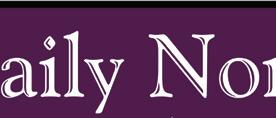


















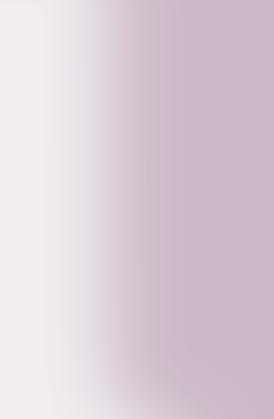




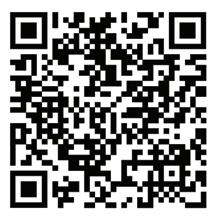

By NINETH KANIESKI KOSO daily senior staffer
NU Votes, a non-partisan program that aims to boost student votership, helped 1,200 new students register to vote during Wildcat Welcome, according to Katrina Weimholt, assistant director of the Center for Civic Engagement.
Founded in 2010 under the Center for Civic Engagement, NU Votes has served as an integral source for students for information about voter registration and voting procedures. at includes resources for absentee voting, mail-in ballots, registration changes and printing and mailing services.
Students can also work NU Votes as student ambassadors and fellows.
Weinberg and Communications junior Philip Blumberg is an NU Votes Fellow. He said he joined the program his sophomore year to get involved in civic engagement. Coming from the Washington, D.C. area, he was particularly interested in mobilizing student votership.
“Everyone understands the importance of having your say in your government, voting on the issues that ma er to you,” Blumberg said. “What we really want to do is just make it as easy as possible for them to vote.”
NU Votes started o as a grassroots initiative by some students and faculty who tried to encourage people to register and vote, Weimholt said.
When the CCE was founded in 2009, Weimholt said the members of the initiative asked that CCE become the home for voter engagement.
As part of the Higher Education Act of 1998, universities that receive federal funding are required to o er every student the opportunity to register to vote.
“ e center started the NU Votes initiative and piloted an initiative to see what would happen if we tried to implement not just the le er of that law but the actual spirit,” Weimholt said. “How could we actually try to check in with every student and get them registered and get them to vote?”
In 2011, NU Votes began reaching out to students to vote while they were in line to get their University ID cards from Norris University Center. is new method took inspiration from the Motor Voter Act, which
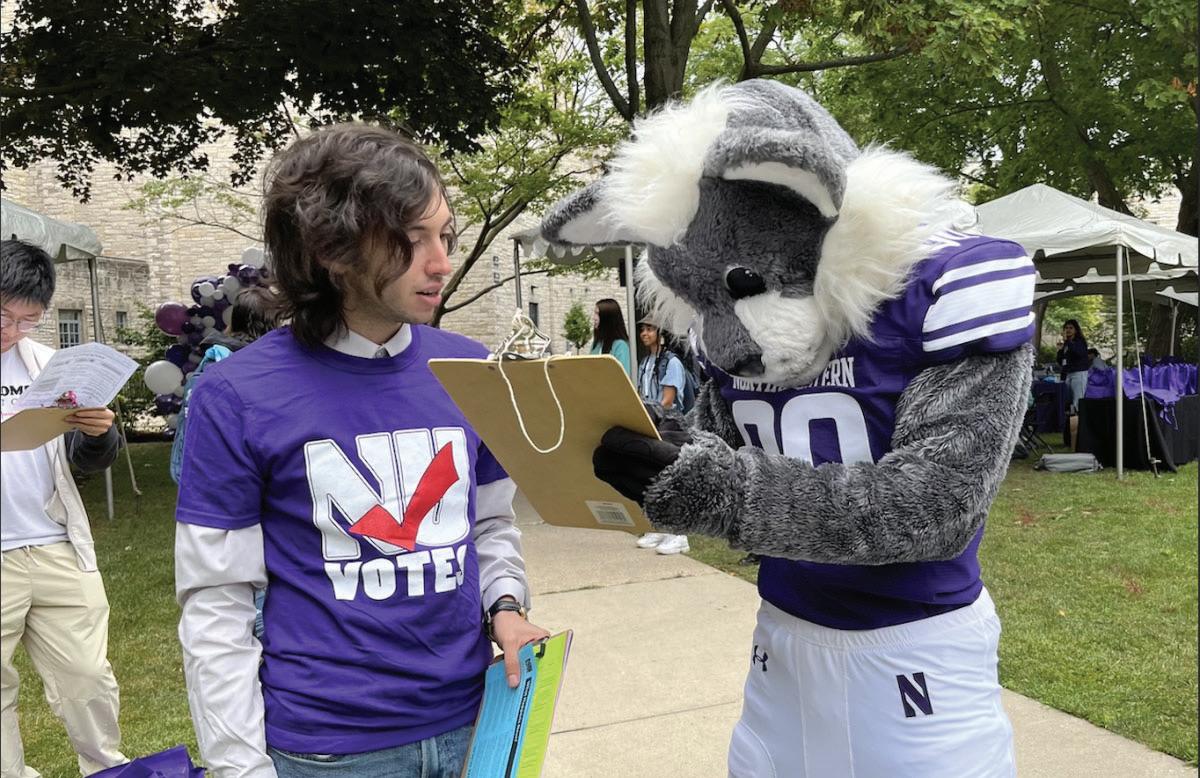
required states to provide voter registration opportunities when people applied or renewed their license.
“We would nd that something like 30-40% of incoming students would come to Northwestern already registered to vote, but by the end of that orientation period when folks had go en their WildCards, we would get those rates up to like 90% or higher,” Weimholt said.
To promote voter engagement across the country, NU Votes also developed UVote, a program focused on teaching other colleges and universities the “ask every student” model of voter engagement, Weimholt said.
e program received acclaim and was praised by Rep. Jan Schakowsky (D-Ill.). e program ran until 2016, when funding dried up, Weimholt said.
As NU Votes grew, services like voter education programs, service stations, online tools, a student ambassador program and a van for early voting were added to keep voter registration high, she said.

“In the 2016 election and the 2018 election, our registration and voting rates just skyrocketed and are much higher than actually the national average, not just for colleges and universities, but in some cases, for all U.S. citizens,” Weimholt said.
From Sept. 25 to Oct. 2, NU Votes is hosting campus-wide voter service stations that provide resources for registering to vote.
Members from the program will be in Sargent Lobby on Sept. 30 and Oct. 2. On Oct. 1, they will be in the Norris Main Entrance from 10 a.m. to 4 p.m. Weinberg sophomore Alex Arnold a ended one of the voter service stations Friday, saying it was the perfect opportunity to ensure that all his voter registration details were up to date.
“If (NU Votes) wasn’t here, I would have possibly showed up to a voting station and not been able to vote,” Arnold said.
ninethkanieskikoso2027@u.northwestern.edu



The Daily Northwestern www.dailynorthwestern.com
Editor in Chief Jacob Wendler eic@dailynorthwestern.com
General Manager Stacia Campbell stacia@dailynorthwestern.com
Holly and John Madigan Newsroom
Phone | 847 491 3222 Campus desk campus@dailynorthwestern.com
City desk city@dailynorthwestern.com
Sports desk sports@dailynorthwestern.com
Ad Office | 847 491 7206 spc-compshop@northwestern.edu
THE DAILY NORTHWESTERN is printed each Wednesday during the academic year, except vacation periods, the two weeks preceding them and once during August, by Students Publishing Co., Inc. of Northwestern University, 1999 Campus Drive, Evanston, IL 60208. All news is published 24/7 online at Dailynorthwestern.com.
First copy of THE DAILY is free, additional copies are 50 cents. All material published herein, except advertising or where indicated otherwise, is Copyright 2024 THE DAILY NORTHWESTERN and protected under the “work made for hire” and “periodical publication” clauses of copyright law.
POSTMASTER: Send address changes to THE DAILY NORTHWESTERN, 1999 Campus Drive, Evanston, IL 60208. Subscriptions are $100 for the academic year.THEDAILYNORTHWESTERNisnotresponsiblefor more than one incorrect ad insertion. Check out



By MAYA WONG daily senior staffer @mayaw0ng
Brat summer is certainly not over yet.
Charli XCX and Troye Sivan transformed a sold-out United Center into a son club on Monday night during the ninth installment of their Sweat tour. With flashing lights, mesmerizing video projections and powerful vocals, the pair created an intoxicating atmosphere, reminiscent of a dance floor.
When English singer-songwriter Charli XCX released her sixth studio album “Brat” in early June, the hyperpop project sent lime green waves across pop culture. With its cover’s simple sans serif font and once unfashionable bright green background, the “Brat” brand has sneaked its way into clothing stores, memes and presidential nominee Kamala Harris’ campaign (Harris adopted the “Brat” stylization on social media after Charli XCX tweeted “kamala IS brat”). The word “brat” even took on a new meaning: something fashionable, chic and cool.
Although Charli XCX’s summer was more commercially successful, Sivan’s music certainly held its own. Promoting his October album “Something to Give Each Other,” Sivan’s suggestive dance moves and honey-like vocals made everyone in the crowd swoon. His viral “Got Me Started” dance (which was parodied by SNL earlier this year) kicked off the concert with familiar moves.
The Sweat tour as a whole,
though, was certainly a celebration of all things brat, pop, clubbing and embracing one’s sexuality.

The singers alternated performing in sets of about three songs at a time. After Sivan’s first set, Charli XCX made her entrance known using a neon green curtain box that spanned from the floor to the ceiling, with “brat” written on all four sides. As the curtain fell, the pop icon appeared from artificial fog, singing the album’s concluding song “ 365 .” She continued pumping up the crowd with singles “ 360 ” (the sister song to “ 365 ”) and “Von dutch.”
Where Charli XCX brought angst and energy, Sivan mellowed the concert with softer tunes like “Rager teenager!” and “Dance to This.” Sitting and lying on a metallic silver bed, he serenaded fans under deep blue lights. e pair’s performance styles complemented each other well, too. Charli XCX commanded the stage with vogue struts and wild dance moves. Sivan adopted a smooth, cool guy aesthetic, incorporating numerous dance numbers with his posse. Together, the headliners embodied sex, freedom and fun.
Most notable of the set were Charli XCX’s performance of “Apple” and Sivan’s take of “One of Your Girls.”
Although Charli XCX sang her popular song in one stationary spot, her crowd work and clear vocals were excellent throughout. The song highlighted one special fan, who
enthusiastically performed the viral TikTok dance to the song “Apple” on screen. A video of Sivan in drag prefaced his performance of “One of Your Girls,” recalling the song’s music video. As he sang, Sivan executed a sultry chair dance that wooed the entirety of the arena.
Perhaps the most sur- prising aspect of the Sweat tour was its stage. Three layers of high scaffolding served as a backdrop for the stage’s main section, creating vertical dimension while the singers performed.
Scaffolding was also used under the stage’s walkway, which led to a platform closer to the arena’s center.
Charli XCX and Sivan utilized this area for multiple sections of the show, strutting through the space
while performing. Singers have certainly used backstage areas as part of their set, but understage is a new innovation.
Although only the first few rows of general admission could see Charli XCX and Sivan, artful camerawork paired with the two’s alluring stage presence brought the area to life on big screens.
But nothing compared to the crowd’s energy.
Nearly every attendee danced through the p.m., jumping up and down to synth beats. One in every few fans wore an article of neon green clothing, donning like

By ALEXANDER HERNANDEZ-GONZALEZ daily senior staffer @alexbespeakin
Mi Kang (Communication ’ 22 ) has always had a passion for theatre, but she never expected to work in the entertainment industry. Now, Kang is playing Hornbeck, a reporter, in Goodman Theatre’s production of the 1960 drama film “Inherit the Wind.”
“I’ve always had an appreciation for art, and I’m grateful that I’ve been able to make it my career,” Kang said.
As a child of immigrant parents, Kang said she was introduced to the creative arts by her parents through piano lessons. At 13 , Kang acted in her first show, which was a community theater production of the 1980 musical film “Fame.”
But Kang put her passion for the fine arts on the backburner shortly after.
“When I was entering undergrad, my parents very strongly suggested that I get a degree that’s, in their eyes, stable career-wise,” she said. Kang graduated from the University of Texas at Austin with a Bachelor’s in Business Administration, Finance, Financial Markets and Banking.
Even though she wanted to honor her parents’ sacrifices, Kang said she felt like she wasn’t having a good experience in the tech industry.
“I’m very fortunate to have parents who love and support me. So, I think they saw me in the tech world and saw how unhappy I was,” Kang said.
After changing career paths while living in Seattle, she thought her acting days were over due to how time-consuming and demanding the industry is. Yet, Kang got involved in her local theatre scene, and her passion resparked.
Kang then applied to graduate programs and found herself at Northwestern pursuing theatre full-time.
As a part of her first class at NU, Kang said she soon found the community she had long craved among her peers and professors. She said she found the connections needed to pursue theatre outside of her education, specifically Communication Prof. Henry Godinez.
“Northwestern did a great job at connecting us with active players in the industry,” Kang said. “I think those connections were important.”
Kang said she believes NU gave her the building blocks to succeed in the industry. Once she received the key lessons and skills, she was proactive in launching her career.
Directing “Inherit the Wind” was always an aspiration for Godinez. He said he appreciated its political themes between science and religion, especially during an election year.
“The arts and theatre, in particular, can affect people in profound ways, making them think about the world in which we live and spur that thinking into action,” Godinez said.
Godinez said that it is crucial to take action to maintain the “freedoms we cherish,” such as the right to think and speak our minds and voting. He said that’s what “the heart of what this play is all about.”
Actress Tyler Meredith said she thought Kang was “brilliant” since she first saw her role

in “Villette” as Lucy Snowe at the Lookingglass Theatre.
Meredith said Kang’s dedication to theatre has taught her about effective storytelling, especially during their two-person scene where Meredith’s character, Rachel Brown, and Hornbeck talk about how people experience
the world differently compared to her Christian roots.
“I’m incredibly grateful to get to be in this process with her and to get to share the same character every night,” Meredith said. alexanderhernandez-gonzalez2027@u.northwestern.edu
By KARINA EID
daily senior staffer @karinaaeid
A raunchy yet emotional twist on Charlie Brown, Northwestern’s theater board Sit & Spin Productions’ rendition of “Dog Sees God: Confessions of a Teenage Blockhead” premiered at Shanley Hall this weekend.
The play, loosely based on characters from Charles M. Schulz’s Charlie Brown franchise, is not just a comedy. “Dog Sees God,” which originally premiered in 2004 , tackles sensitive themes like fatphobia, homophobia, death and suicide.
Communication senior and director Ferdinand Moscat felt particularly compelled by the dichotomy of both light and heavy topics in the show.
“I’ve never read a play that could both shock
and offend me but also console me,” Moscat said.
With some scenes that require trigger warnings, as well as the frequent use of a homophobic slur, it can be grave. Yet, scenes depicting house party dance sequences and silly hyperbolized scenes about high school gossip helped balance — or, perhaps disorient — the audience’s emotions.
In the less somber scenes, the audience chuckled when Van, played by Communication senior Danny Dollase, entered the stage, sporting a goofy attitude and firmly clutching a bong.
Weinberg senior and audience member Vikram Jallepalli said he was captivated by the show’s blend of comedic and serious themes.
“There are some comedic moments in a serious show, which I think really elevates the serious moments,” Jallepalli said.
Preserving almost all aspects of the original
script, Moscat said he also allowed his creativity to soar as he made three unique adjustments.
First, the “Dog Sees God” script does not specify a time period or setting. In collaboration with the other designers, Moscat said he decided to set the play in Northern Florida during the 1990 s. This directorial choice offered historical context to some aspects of the show, including the rampant homophobia.
Moscat also incorporated many musical elements into the show, flying beyond the pages of the 2004 script.
“There’s something so spellbinding about watching live music,” Moscat said.
He said he organized a band of NU’s students, including lead vocalists Nicole Streger and Gavin Shaub. The band, perched directly next to the stage, played renditions of popular 90 s songs between scenes, including Fiona Apple’s “Criminal” and The Cranberries’ “Dreams.”
He also said he changed lines that included ableist slurs. Ableism is not as central to the play as homophobia, so he decided to avoid the unnecessary harsh language altogether. These serious themes aren’t foreign to Sit & Spin Productions though. The group’s mission, according to its website, is to embrace risky and unconventional topics. “Dog Sees God” specifically tackles the difficulty of discovering one’s sexuality and identity as told through the experiences of high schoolers like the main character CB, played by Communication senior Kieran Rowe.
Rowe said he hopes people leave with a new sense of interest and compassion for student theater.
“I just hope people take away a lot of love and appreciation for all the artistic possibilities here at Northwestern,” Rowe said.
karinaeid2027@u.northwestern.edu
By JACKSON WEIER daily senior staffer @jacksonweier
Francis Ford Coppola, 85-year-old director, may have the best four- lm run yet. Beginning in 1972 and concluding in 1979, Coppola directed e Godfather,” “ e Conversation,” “ e Godfather Part II” and “Apocalypse Now.” If one were to hypothetically take the average rating of these four lms on the lm-centered social media platform Le erboxd (I’ve never used it), the average would come out to 4 425 stars out of 5 — esteem so high it’s largely unheard of. Coppola’s newest endeavor is “Megalopolis”,
which he wrote, directed and produced. It came out in theaters Friday. e lm serves as an unfortunate and — at times — frustrating reminder that the era of legendary creation from Coppola is a relic of the past.
“Megalopolis” is set in what Coppola calls New Rome, which appears to be some alternate version of the United States. e lm follows genius innovator Cesar Catilina (Adam Driver) and his beloved Julia Cicero (Nathalie Emmanuel) as they traverse political turmoil and Catilina’s own ambition.
e movie has glaring structural issues from the very beginning. It is unclear what exactly New Rome is, whether it’s real or whether the movie is set in the past or the future. Coppola doesn’t seem sure whether this is a surrealistic, dystopian or even

modernly iterative movie.
Adding insult to injury, Coppola commits a directorial sin in the very rst frame: He spells out the exact meaning of his movie via a digitally rendered Roman monument. One of the worst things a director can do is assume their audience is unintelligent, especially right o the bat. Shortly a er, Catalina — a visionary with the power to stop time — discovers an almost divinely powerful material called Megalon. A er recently winning a Nobel Prize, which the movie seems set on mentioning repeatedly (again, where are we?), Catalina is set on using Megalon to create a utopia in place of a declining New York City. roughout his omas More character arc, Catalina is impeded by the stubborn Mayor Cicero (Giancarlo Esposito), a local billionaire (Jon Voight), a past lover (Aubrey Plaza) and a standoish relationship with his mother (Talia Shire) that would have Freud grinning. Despite it all, Catalina gets married to the one woman who can unlock his talent fully and see him for the “Prisoner of Azakaban” time-turning genius that he is. He builds Megalopolis and we all live happily ever a er. e metaphor of the Catalina character is shallow and the lm su ers because of it. Brushing away any of the New Rome oddness or lack of clarity, Catalina is clearly a proxy for how Coppola thinks of himself and those who have doubted or propelled him forward in his career. If the decision is intentional, it’s crass; If unintentional, it’s so unaware that it’s somehow worse.
All that said, credit is to be given where it is due. ere is no doubt that Coppola is still one of the best at piecing together scenes with sucient action — see the wedding in “ e Godfather,” the beach scene in “Apocalypse Now” or the rumble in “Rumble Fish.” e coliseum sequence in “Megalopolis” is entertaining and well done, if
we disregard most plot and character aspects. “Megalopolis” ultimately feels like a poor blankcheck movie. It is the type of project directors are given complete creative control over following a period of unprecedented success. e best version of “Megalopolis” would have been made when Coppola began conceiving of the idea — in the late 1970s coming o his legendary run. I’d like to think this version of the lm would have been interesting if not well done.
Instead, the “Megalopolis” that audiences received shows the legendary director’s age. Unlike Cesar Catalina, Coppola has been unable to freeze time in his period of genius, resulting in near complete disaster of a lm.
jacksonweier2026@u.northwestern.edu
arts & entertainment
Editor Betsy Lecy
Assistant Editors Karina Eid Alexander Hernandez-Gonzalez
Design Editors Paloma Leone-Getten Danny O’Grady
By CARLOTTA ANGIOLILLO daily senior staffer @carlo aang76
University President Michael Schill announced the creation of a new religious literacy program through the Office of Institutional Diversity and Inclusion last month — but so far the program hasn’t implemented any concrete plans.
Schill wrote in an Aug. 20 email to the Northwestern community that the program is part of the University’s “new integration of antisemitism and Islamophobia” into the work of the OIDI office.
Currently, the new OIDI webpage states that the initiative is designed to “foster understanding, empathy and inclusivity across religious differences and educate our campus community on the role of religion in social, political and cultural life.” The program will also include speakers and moderated reading and discussion groups, according to its page on the OIDI website.
However, notably missing are any specific details on when these plans will roll out.
Michelle Manno told The Daily in a statement that the program officially launched last academic year but had been in discussion since 2022
“The program is intended for a much broader examination of the role of religion in social, political and cultural life beyond our current geopolitical moment,” Manno said.
The program’s page so far only displays information about Jewish holidays and resources on antisemitism and Islamophobia.
Manno said the current resources about Islam and Judaism are “just the starting point” and that, as the program develops, information about other faith traditions and religious holidays will become available.
Weinberg Prof. Elizabeth Shakman Hurd, who is the chair of the Religious Studies department, said she was “really surprised” that she had not known about the program before it was announced to the NU community.
She said based on the available information, she thinks the resources on Judaism and Islam point toward an attempt to address tensions on campus due to the Israel-Hamas war. However, Shakman Hurd said religious literacy, while important, is not what is driving disagreements on campus and thinks it would be more helpful to be transparent about the issues at hand.
“I’d like to see a space developed in which all these voices could really be heard, you know, and people could work through this, rather than acting as if the problem is religious literacy,” she said. “That’s not the problem. The problem here is violence.”
Manno said OIDI has spoken to people with “content-area expertise” at NU and other institutions while developing the program and will continue reaching out to students, faculty and staff.
History Prof. David Shyovitz said he spoke with Student Affairs and OIDI over the summer about the program and is aware that OIDI had some limited discussions with other faculty members in the History and Religious Studies departments.
Shyovitz said he wants students to talk to their peers about the Israel-Hamas war, but he also thinks it’s important to learn from faculty who have thought about these issues for decades and possess a wealth of knowledge.
“People have very passionate views, and sometimes those views create sparks when they come into contact with one another,” Shyovitz said. “For the most part, that’s okay, we shouldn’t be afraid of that. But what I think we should be afraid of is if people are yelling at each other on the basis of, ‘I don’t know very much about my cause, but we’re going to really get into the thick of it.’”
Shyovitz said what he has seen about the initiative so far has been vague, but hopes it will provide an opportunity for “better understanding the viewpoints that you profoundly disagree with.”
The program has a newsletter available on its website for those who wish to keep up with events and programming. Manno also said that OIDI welcomes community feedback and wants to include diverse voices and perspectives.
“Our hope is that our community will see this program as an opportunity to learn about religion as one piece in the much bigger puzzle of creating a more inclusive campus environment for everyone,” Manno said.








By CHARLIE SPUNGIN
daily senior staffer
@charliespungin
Redshirt sophomore quarterback Jack Lausch’s electrifying performance — the highest of highs — in a win over Eastern Illinois in Week 3 was followed up by the lowest of lows. Against Washington, Lausch completed just 8 -of- 27 passes for 53 yards as Northwestern fell into an early deficit that resulted in a 24-5 defeat.
The Wildcats (2-2, 0-1 Big Ten) had a bye last week, allowing coach David Braun’s squad to regroup following the loss in Seattle. Meanwhile, Indiana enters Evanston on the heels of a 42 - 28 home win over Maryland.
The Hoosiers ( 5 - 0 , 2 - 0 Big Ten) — led by first-year head coach Curt Cignetti — are amid a program renaissance. After three consecutive seasons failing to exceed four wins, Indiana is 5 - 0 for the first time since 1967
The game will kick off at 2 : 30 p.m. in NU’s first home Big Ten game along the lakefront at Northwestern Medicine Field at Martin Stadium. It is also the first home game where undergraduate students are back on campus.
As the ’Cats look to knock o a ranked team for the rst time since 2020, here’s what to watch for.
1 . Porter’s potential return
In his Monday press conference, Braun said he is hopeful to see graduate student running back Cam Porter lined up behind Lausch on Saturday, though he noted the staff will not know for certain if the star rusher will play until later in the week.
“Cam’s definitely trending in the right direction,” Braun said. “If there’s anyone that’s going to work their tails off to make sure they’re back, it’s Cam Porter.”
Against Washington, Porter was a late addition to the injury report with a lower-body injury. Without him, redshirt sophomore Joseph Himon II and redshirt freshman Caleb Komolafe mustered just a combined 29 yards on 12 carries.
Through three games, Porter has rushed for 234 yards and three touchdowns. In each of his appearances this season, Porter has averaged at least 4 8 yards per carry.
The NU offense stalled in the game without Porter, scoring the fewest points in Braun’s tenure with the program. With the ball on

the one yard line on first down and a goal against Washington, the ’Cats failed to walk away with points.
“We’re not playing at the level that we want to, but I think there’s a lot of areas that we’re excited about to see some breakthrough in,” Braun said. “Up until Washington, I thought we were doing a great job of establishing the run game.”
Having No. 1 in the backfield could help the NU rushing game return to form and be the engine to turn the tide for the upsethungry ’Cats.
2 . The Hoosiers’ explosive offense
Indiana’s offense, led by quarterback Kurtis Rourke, has been among the nation’s best, pouring in 48 8 points per game and 513 yards per game. Both figures rank top 10 nationally.
Rourke, the 2022 MAC Player of the Year for Ohio, is tied for the most passing touchdowns in the Big Ten with 11 and is second in passing yards with 1,372. Braun said Rourke has the potential to create immense issues for his defense given his talent level.
“We’ve seen some good quarterback play so far this year,” Braun said. “He has clearly impressed me more than anyone that I’ve watched on film so far this year. He’s doing a great job, and the guys around him are doing a great job of supporting him.”
The ’Cats struggled to slow down Washington quarterback Will Rogers last game as he completed 20-of-28 passes for 223 yards and two touchdowns.
Rourke threw his lone two interceptions of the season last game against Maryland, giving Braun and his staff an idea of what they need to do to disrupt the sixth-year quarterback.
“They’re balanced, high-end quarterback play,” Braun said. “They do a great job in RPO. (They’re) very strategic and well thought out on their shot plays … We’re going to have to force (Rourke) to process post-snap, and we’re going to have to find ways to affect him in the pocket.”
3 . NU’s defense needing improvement
With the bye week having come and gone, the ’Cats defense has had an extra week to prepare for the Indiana offense.
Washington’s offense gave NU fits,

particularly in the first half where the Huskies scored 17 of its 24 points. It was defensive coordinator Tim McGarigle’s unit’s worst performance of the season by total yardage allowed.
“Our guys on the defensive side of the ball were not pleased with their performance, and it wasn’t up to the standard,” Braun said.
The ’Cats’ game against Washington marked the first time this season that the defense did not register an interception. Redshirt junior defensive back Theran Johnson allowed a
46 -yard touchdown on the Huskies’ second drive of the game.
Despite the team’s defensive lapse less than two weeks ago, Braun said he has an inkling that his defense can bounce back at home.
“There’s certainly a level of confidence on that side of the ball with that group,” Braun said. “I think that group is itching to get back to game day.”
charliespungin2027@u.northwestern.edu









By HENRY FRIEMAN daily senior staffer @henryfrieman
When the Northwestern Medicine Field at Martin Stadium lights come into view from the team bus on gameday, redshirt junior punter Luke Akers shi s the queue in his playlist.
e pregame worship music that he listens to switches o as the rst chime of AC/DC’s Hells Bells pipes through his headphones.
It’s a routine Akers has done since high school when he rst began punting and has carried into his third season with Northwestern.
“I’m not superstitious, but I’m a li le ‘stitious,’” Akers said, paraphrasing “ e O ce” character Michael Sco . “I like keeping the same routines for every practice, every game, and if I stray from that, then it bothers me a li le bit.”
e routines have paid o for Akers, who has earned the starting role at punter for the Wildcats (2-2, 0-1 Big Ten) this year.
Akers has punted 19 times in the season’s opening four games, averaging just under 41 yards per punt. Eight have landed inside the 20-yard line and two have been longer than 50 yards.
“Luke is a tireless worker,” coach David Braun said. “I mean, there’s a lot of things we’re pu ing on Luke’s plate right now, and he’s excelling in that space … credit to him on everything he’s done to create the opportunity for himself this year.”
Hailing from a suburb of Nashville, Tennessee, Akers picked up kicking as a junior in high school to make friends on the football team a er changing schools. He had played soccer all his life and transitioned toward another use for his legs.
He already had a good coach to train him: His father, legendary kicker David Akers, a six-time Pro Bowler, two-time rst-team All-Pro and a member of
the Philadelphia Eagles Hall of Fame. Yet David Akers didn’t encourage his son to follow in his footsteps.
“My dad never pushed me to play football,” Akers said. “Whatever I did, he just wanted me to go 100 percent at what I did, so I approached it that way.”
A er transitioning to focusing on football full time in his senior season of high school, Akers was tabbed the No. 3 kicker in the 2020 recruiting class by 247Sports.
He commi ed to UCLA, where he started 19 games and boomed a 66-yard punt –– his career long –– against Hawaii in 2021
Akers transferred to NU in 2022 and started in all 12 games before redshirt junior Hunter Renner shared the bulk of reps in 2023. Akers used the 2023 season, his junior year, as a redshirt season and had surgery in the o -season.
Akers said he had surgery following the season and spent part of the o season recovering. He said that this year’s o -season was his rst o -season spent without



By JAKE EPSTEIN daily senior staffer @jakeepste1n
Northwestern coach David Braun and Indiana coach Curt Cigne i began their respective Monday press conferences over 200 miles apart, but the gap between their teams’ season outlooks may exceed even that gure.
Still, Braun said he’s optimistic about achieving goals the team set in the preseason, including a potential bowl appearance.
“Everything is still right in front of us,” Braun said. “I have high expectations for this group and so do they.” e Wildcats (2-2, 0-1 Big Ten) will welcome the high- ying Hoosiers (5-0, 2-0 Big Ten) to Northwestern Medicine Field at Martin Stadium Saturday a ernoon.
No. 23 Indiana is the rst ranked opponent NU will face this season.
“It’s a hot football team right now,” Braun said of the Hoosiers. “ ey’re playing really con dent, playing really well, o to a 5-0 start. No weaknesses on this team, played really well in all three phases … ( ere’s) an incredible opportunity, incredible challenge in front of us.”
Braun’s group will be two weeks removed from a dismal 24-5 loss to Washington in Sea le, while the Hoosiers are fresh o a 42-28 victory over Maryland. e win marked Indiana’s fourth consecutive game with at least 40 points scored.
With the ’Cats looking to knock o a double-digit favorite and defend their home turf Saturday against the Hoosiers, here are some key storylines around the program.
Graduate student running back Cam Porter missed NU’s matchup with the Huskies due to a lower-body injury, which came as a signi cant gameday surprise. Braun didn’t deliberately disclose Porter’s Saturday status, but he hinted that No. 1 will hopefully suit up. “Cam is de nitely trending in the right direction,” Braun said. “We’ll know more as the week goes along in terms of Cam’s availability. We’re really hopeful that he’ll be available on Saturday. If there’s anyone that’s going to work their tails o to make sure they’re back, it’s Cam Porter.”
Porter’s fellow captain, redshirt junior defensive end Carmine Bastone, has yet to make his season debut due to what Braun deemed a “ nicky” injury. A former
walk-on, Bastone recorded two sacks last season. Braun said Bastone is “doubtful” to play against Indiana.
e o ensive line received its fair share of knocks in the loss to Washington, and Braun delivered both positive and negative injury developments Monday. Redshirt sophomore guard Nick Herzog is expected to return to the lineup Saturday a er he was inactive Week 4
However, graduate student center Jack Bailey — a Colorado transfer who earned the starting job early this season — su ered an injury against the Huskies that will rule him out for an extended period of time, Braun said.
“Jack won’t be able to go this week, and … I think it’s unlikely we’ll see Jack for the rest of the season,” Braun said.
With Bailey’s injury, redshirt junior center Jackson Carsello will slide into the starting role.
Braun stands by Lausch as his starter
A er a sensational second-half display against Eastern Illinois Sept. 14, redshirt sophomore quarterback Jack Lausch came crashing down to earth in the Big Ten opener the following week, completing just 8-of-27 passes for 53 yards and two interceptions.
Lausch’s 13 1 QBR is the lowest among all eligible Power Four passers — and No. 127 in the NCAA.
Despite Lausch’s struggles in Sea le, Braun stood behind his decision to keep Lausch as his starter moving forward.
“Going back and evaluating the lm, I’m really proud of the way Jack stood in and continued to compete against Washington,” Braun said. “He’s standing in the pocket, taking some hits, delivering the ball. ere were opportunities out there in the passing unit we didn’t convert on … We just need to take a deep breath (and) take it one play at a time.”
Braun pointed toward establishing the run as a key goal to facilitate success for his young signal caller. But, the ’Cats will have to do so against a defense that has surrendered just 82 rushing yards per game — and their bellcow in Porter isn’t guaranteed to receive his typical workload even if he is cleared for action.
e coach’s message to Lausch remains steadfast: Value the football.
“Make a decision and let it rip, but don’t be reckless and put the ball in danger just to make a play,” Braun said. “I think Jack has done a good job of valuing the football.”
jacobepstein2026@u.northwestern.edu



Indiana (5-0, 2-0)

Michigan (4-1, 2-0)




Ohio State (4-0, 1-0)
Oregon (4-0, 1-0)
Penn State (4-0, 1-0)



Rutgers (4-0, 1-0)
Iowa (3-1, 1-0)
Nebraska (4-1, 1-1)




USC (3-1, 1-1)
Michigan State (3-2, 1-1)
Washington (3-2, 1-1)
Northwestern (2-2, 0-1)

Wisconsin (2-2, 0-1)

Purdue (1-3, 0-1)

Maryland (3-2, 0-2)

Minnesota (2-3, 0-2)

UCLA (1-3, 0-2)
injury and took advantage of it.
“(We) had the competition going into spring ball and I just wanted to go out and work and try to do the things o the eld that would help me as well,” Akers said. “Overall, I just wanted to get stronger and just be able to go out and perform for the guys.” He won the job over Renner and has been heavily involved on special teams. Braun noted that in addition to punting, Akers also contributes to kicko s and is the long-range eld goal kicker near the end of the half. When NU’s o ense spu ers, Akers is bound to ip the eld for the ’Cats defense.
“I want to continue to make an impact for the team, and I’d like to get a deep eld goal in there once in a while –– that’d be fun too,” Akers said. “But I just want to keep having a blast with the guys. Let’s go get a bowl and let’s go have some fun for the rest of the year.” henry ieman2027@u.northwestern.edu
Gameday Editor
Jake Epstein
Writers
Henry Frieman
Jake Mozarsky
Charlie Spungin
Gameday is a publication of Students Publishing Co. A four-page issue is usually published on the ursday prior to Northwestern home games and a two-page issue is published on the ursday prior to Northwestern road games.
All material is © 2024 Students Publishing Co. Questions or comments should be sent c/o Gameday Editor Jake Epstein, 1999 Campus Dr., Evanston, IL 60208.













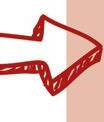






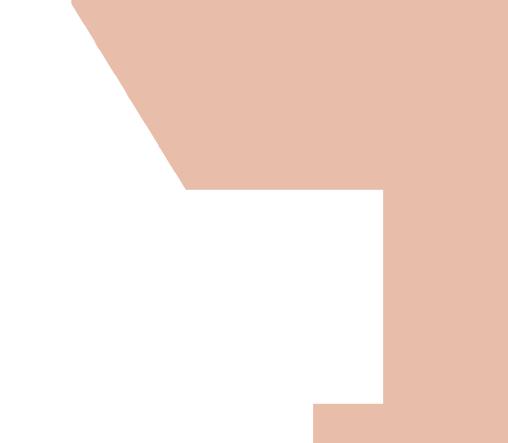





By JAKE EPSTEIN daily senior staffer @jakeepste1n
During the early stages of his college football career, Jaylen Pate had thoughts of walking away from the game entirely.
A then-freshman defensive end at Wyoming, Pate put in the e ort on the practice eld and in the weight room — as he’d done during his Chicago Sun-Times All-Public League career at Lane Tech College Prep — but the pass rusher didn’t see immediate on- eld dividends.
He said his initial stint in Laramie was one of the toughest periods of his life.
“I thought I was in a great position to hit the ground running, start fast, and I just absolutely ran into a wall,” Pate told e Daily on Tuesday. “I really wanted to quit, but one promise I made to myself was that I wouldn’t.”
For Pate, the experience taught him a valuable lesson: Trust his individual process. A er he initially struggled with doubt that he belonged at the Division I level, Pate eventually worked his way into the Cowboys’ starting lineup. But, he wanted more.
In pursuit of maximizing his NFL dreams, Pate transferred to Northwestern ahead of the 2022 season with three seasons of eligibility remaining. With the move, Pate shi ed from a school more than 1,000 miles away from home to a program just a halfhour drive away from his old high school stomping grounds.
He recorded 10 tackles in his rst season with the Wildcats, but Pate’s campaign ended prematurely due to a torn ACL su ered at Minnesota in November
2022 e injury triggered a monthslong rehabilitation journey — a ba le to reach game-ready condition by the following year’s season opener.
When he stepped on the sweltering SHI Stadium turf for NU’s season opener against Rutgers last September, Pate prevailed in his ght against time. Upon his return, Pate took a few games to nd his footing, but he soon elevated his game to new heights.
“Last year was the rst time I was starting to nally do the things I’ve been working on for the longest time,” Pate said. “To not just be on the eld doing my job, but really being able to dominate.”
Until midway through his h year, Pate said he never intended to play a sixth collegiate season.
Following a banner 2023 campaign, where Pate tallied 27 tackles, three tackles for loss and three sacks in his rst season playing under defensive line coach Christian Smith, Pate consulted scouts and trusted advisers in his decision to extend his stint in Evanston.
“If it was based o ashes — we take ve great plays — I’d have been dra ed in the rst round,” Pate said. “But the whole point was, ‘How can I turn those ashes into consistent play?’”
Now four games into his sixth and nal collegiate season, the Chicago native continues to strive toward steady impact. Long a er weekday practices o cially conclude, the defensive lineman remains on Northwestern Medicine Field at Martin Stadium, taking extra repetitions with his position coaches.
It’s a habit Pate began during his senior year of high school, and he said his work behind the scenes is where he sees the most progression.
“In a lot of ways, I’ve been playing catch up,” Pate said. “ at means I can’t just do the average




stu , or necessarily do what everybody else does. I’m always just looking for one li le thing I can improve… e work is the foundation. It’s like a stone cu er. When you’re hi ing the stone, hitting the stone, nothing seems to happen. en, it cracks.”
With his veteran stature in the defensive line room, Pate has looked to mentor his younger teammates. In doing so, he said he’s providing guidance he could’ve used during his tumultuous transition to college.
ere, his career lessons come full circle.
“I can tell when a guy comes in and they’re kind of struggling,” Pate said. “It took time to get here. I always explain to them how I didn’t necessarily think it could get be er. People obviously think of where you start and where you nish — but it’s always the area in the
middle, all the stu you do in between, that de nes you.”
e ’Cats will face their rst ranked opponent this season Saturday a ernoon, as they’ll take on No. 23 Indiana at home. Pate said the Hoosiers’ passing game — led by quarterback Kurtis Rourke — is their core identity.
Pate said his position group has a prime opportunity to make a marked impact on the matchup.
“ is is the reason why you want to play in a conference like the Big Ten,” Pate said. “I love these big games. ese are the ones you look forward to. I wouldn’t necessarily say these games raise your level of play, but it de nitely makes you excited and ready to go out there and compete.”


jacobepstein2026@u.northwestern.edu

By JAKE MOZARSKY
In recent years, Indiana football has been the doormat of the Big Ten. The Hoosiers have posted 2-10, 4-8 and 3-9 records in the last three seasons, which led former coach Tom Allen to part ways with the program.
Now, under first-year head coach Curt Cignetti — who led James Madison to an 11 - 2 record in just its second FBS season in 2023 — the Hoosiers have already surpassed their win totals from the past three seasons.
No. 23 Indiana is 5 - 0 and finds itself inside the AP Top 25 for the first time since the 2021 preseason poll.
Cignetti’s nationally-ranked Indiana is the next test for Northwestern, which will face the Hoosiers this Saturday in Evanston. Indiana is already a force to be reckoned with in Cignetti’s debut season in Bloomington, and the team continues to ascend the conference landscape.
The Hoosiers have experienced major
changes on both sides of the ball. Thirty-eight players returned from 2023 — the third-fewest in Division I. This new Indiana group is as formidable an opponent as the Wildcats have seen this season. Cignetti is building a Hoosiers team that will look much different for years to come.
“It’s no surprise to me that they’re having the success that they’re having,” coach David Braun said Monday. “Coach Cignetti has been able to do this at multiple stops, to get teams playing at a high level very quickly.”
The team’s success starts with quarterback Kurtis Rourke, who has been the best Hoosier signal-caller since Michael Penix Jr. The Ohio transfer has thrown for 11 touchdowns to only two interceptions through five games and has surpassed 250 yards in four of them.
This past Saturday against Maryland, Rourke dueled with one of the top quarterbacks in the conference in Billy Edwards Jr. and threw for a season-high 359 yards.
Cignetti’s offense has been one of the best not only in the Big Ten, but in the country. The Hoosiers are averaging 48 8 points per game, the third most in the nation. Their average of 513
yards per game ranks them ninth in the country. Indiana has scored more than 30 points in all five of its contests.
Behind the offense, Cignetti’s group has already broken multiple program records this season. On Sept. 6 , Indiana scored a programbest 77 points against Western Illinois —the previous record was 76 set in 1901. More importantly, the Hoosiers are 5 - 0 for the first time since 1967
Indiana has also taken significant steps forward defensively, transforming a unit that was last in the Big Ten in yards per game and secondto-last in points per game to one that is top-five in both categories. Through five games, the Hoosiers also lead the conference with 17 sacks and are tied for first with 35 tackles for loss.
Combine all of this, and you get a Hoosier squad that’s better than most in recent memory. That’s why Indiana is ranked No. 23 . With a win against the ’Cats on Saturday, the Hoosiers can clinch bowl eligibility — something the team has done only five times in the 21 st century.
“Their ability to establish an identity in all three phases, establish a culture and have a group
that’s playing really well together is a credit to coach Cignetti, his entire staff and the group of young men that are there,” Braun said. “It’s a tremendous turnaround, and they are certainly off to a hot start, not only winning football games but winning them in emphatic fashion.”
Just like Braun in his first year with the program, Indiana’s Cignetti is taking the Big Ten, and the country, by storm. The Hoosiers’ success story is noticeable, and if it continues it will become a bigger national sensation.
“There’s a lot of excitement around that, our first Big Ten game of the season against clearly a very well-coached, talented, winning football team,” Braun said. “There’s no doubt they have our attention — the job that they’re doing, the way that they’re winning, the way they’re closing out games. This is a very talented football team that’s playing at a really high level.”
Braun and Cignetti will shake hands on Saturday, a meeting of two coaches changing the culture of their respective programs and reaching unforeseen heights.
jakemozarsky2025@u.northwestern.edu
By ISAIAH STEINBERG and JANELLE MELLA the daily northwestern @isaiahstei27 / @janelle_mella
For Northwestern Associated Student Government, the Fall Quarter brings Student Organization Finance Office reforms, Senate elections and meetings with the administration about last year’s Senate legislation.
Beginning this fall, the Student Activities Finance Committee will implement its longawaited plan to digitize SOFO, switching from paper transactions to the NUFinancials website.
The goal is to make student organization finance more accessible to students, according to Medill sophomore and SAFC Deputy CoChair John Sisco, a former Daily staffer.
“When the rest of Northwestern’s finances are handled online, accountants can check off on a purchase digitally, remotely, overnight, and funding transfers can also happen overnight digitally,” Sisco said. “This is us catching up with the times and, to be frank, the 21 st century.”
SESP junior and ASG Co-President Caleb Snead said SOFO will release a training program for student organization treasurers this week.
This year, the Senate is also responsible for allocating funding from ASG grants. The ASG Executive Grant, which awards $23 , 000 per quarter to student groups, will accept applications starting in the next few weeks. On Oct. 20 , the Senate will allocate $5 , 000 to student groups with its New Student Organization Support Fund.
Prominent legislation passed last year includes the People’s Resolution to divest from Israeli institutions, the Pride House resolution to establish LGBTQ+ affinity housing, a resolution for NU to retract the John Evans Study Committee report and a resolution to mandate crisis response training for students and faculty.
After the Senate passed this legislation last year, the senators and co-presidents plan to meet with University administrators to implement these resolutions and improve communication between them and student groups, according to Snead and fellow Co-President


Weinberg junior Ty’Shea Woods.
“The first (goal) is engaging with the incoming class, student leaders and the administration, just to make sure that we are well-informed on what the student body needs,” Snead said.
Despite there not being an active funding cycle this quarter, Sisco said SAFC will expand its curriculum for student organizations to prepare them for funding applications in the spring.
“We want to make sure that we’re working

toward further education and understanding what our student body feels, what our student presidents and treasurers are feeling, how much of a time commitment it is for them, and making it easier for them,” SESP sophomore and SAFC Deputy Co-Chair Gauri Adarsh said. Student organizations that received SAFC allocations in Spring Quarter should receive money in their SOFO account in the next two weeks, according to Sisco.
Sisco, Snead and Woods said a main goal for


the upcoming year is to increase transparency and facilitate communication between the student body and administration.
“Whenever you have questions about our workings and what student groups can expect from us, we want to have an open dialogue with student groups at all times, because, ultimately, our role is to serve you,” Sisco said. isaiahsteinberg2027@u.northwestern.edu janellemella2027@u.northwestern.edu
























When I applied to college, I purposefully chose schools I knew would let me live on campus for all four years. is was mostly because my previous a empts at cooking had invariably ended with my mother and I shouting about physics over a pot of boiling water, or I got my stirring privileges revoked about ve minutes in for “a lack of vigor and commitment.” So when I found myself wandering the aisles of a Jewel-Osco in the fall of my junior year, desperately wondering what regular people ate (meatloaf?) and how on earth they made it (I still don’t know, if we’re being honest), I can con dently say I didn’t know the rst thing about providing for myself.
Enter this advice column. It’s called “Best Guess,” and if it can help anyone as hapless as I’ve been throughout college, it will have done its job. For my rst entry, I decided on an in nitely practical topic: How to feed yourself once you’re o the dining plan. It’s presented here as a series of bullet points, in no particular order except what I consider most pressing. Also, it assumes you have a working kitchen, a couple sizes of pots and pans and the ability to work an oven, a microwave and a stove. If you don’t know how to use any of that, call whoever taught you how to tie your shoes and ask them. Here we go!
First up: What you ate growing up is what you’ll gravitate to now. Don’t ght it.
ere’s no need to reinvent the wheel and start eating like a completely di erent person when you start college. e reason that Jewel-Osco alarmed me so much is that really, I should have taken the two buses and a train to the Super H Mart in
Niles, which is where all the ingredients I actually knew how to use were. Life got way easier when I realized the easiest recipes I knew were Korean, and that I was most uent in using ingredients found in Korean or Asian food. Obviously, this won’t necessarily be true for you, but most of the time the food you grew up on and watched people cook is going to come most naturally to you. You may not know what “grown-ups” eat, but if you remember your favorite dinner from when you were in the third grade, chances are you’re already halfway to being good at making that.
So we’ve made it to Jewel-Osco. How o en do you go, and what do you get? ese tips helped me.
Accept that some things will go bad before you eat them.
You’re going to, at some point, eat two slices of bread and then discover blue mold on the entire rest of the loaf. And it will be ne. Just throw it out and take a week to soul search about how much bread you really eat, then come up with a solution (like not buying bread, freezing slices or a roommate split situation.)
Find a salad you like.
Salad is a really capacious term here. It just has to have a decent amount of greens, so pu ing a lot of le uce on rice and pu ing ranch all over it counts. Le uce (or some other leafy green, like kale — you know what I mean) has to be an essential part of the dish. I am pre y sure eating chicken nugget caesar salad once a week actually saved my vitamin levels.
And to be honest, I’d count a chicken shawarma bowl with enough vegetables as a salad too. e point really is to get enough of the green stu to prevent severe nutrient de ciency.
Have two fruits and two veggies you can consume easily and buy within your price point to get at the grocery store every time you go. My
criteria for these (they don’t have to be yours) are that they are easily edible raw or they’re frozen and will last until the end of time or you are pro cient in at least two ways to cook them. It’s easy to switch them out, too. In the summer, when apples get mealy and gross, I am a nectarine gal!
At this point, the lineup is: cherry tomatoes, carrots, apples and a bag of le uce. I nearly always have these four in the fridge! Also, in case of emergencies, frozen edamame and broccoli. e same goes for carbs. Rice and bread are my best friends, but tortillas, pasta and potatoes are classic college options as well.
And now, for the kitchen.
e freezer is your best, best, best friend. Nobody tells you this (I can’t imagine why not), but one thing about freezing temperatures is that no mold will ever grow there. e only thing that really happens is a downgrade in quality. Frozen and thawed grilled hot dogs are still edible, but (trust me) not good. But they won’t kill you!
I have pre-minced frozen garlic, frozen tomato paste, frozen chopped green onions, frozen cookie dough, frozen meatballs and frozen burritos in my freezer right now. I would survive the apocalypse and also midterm week.
In all seriousness, way more things than you think freeze and reheat fantastically (burritos and mochi muffins taste almost the exact same, and bread toasts right from the freezer!)!
e spice rack is your other best friend. I take personal o ense to college cookbooks that have no spices (not even like, garlic salt) in their recipes. What, are we allergic to avor, just because we’re taking classes? Investing in cinnamon, nutmeg and curry powder made
everything I made taste way be er, and they more than paid for themselves, given how much I used them. Get some paprika!
Level yourself up.
When I became the kind of person that used lemons, onions and Greek yogurt regularly in my cooking, that was a huge deal. But it took three months of Cup Noodles and quesadillas (admittedly very good quesadillas with greens and stu ) to get there. Keep trying new things, but don’t beat yourself up if it doesn’t work out. You can always go back to the old standbys. ere is no shame in Cup Noodles (and premade food)!
Cup Noodles is a college food for a reason. I eat it once or twice a week and it has never stopped being u erly delicious. Also, having a stock of pre-made foods that don’t really go bad like soup, microwave meals and chicken nuggets is a great way to give yourself some breathing room during hard weeks. Keeping yourself fed is always be er than not eating if you don’t feel like you have a meal ready. Microwaving a dinner is be er than ge ing it from the library vending machine, but even that is be er than nothing at all.
Which brings me to my nal piece of advice: If you heat something up hot enough and you are hungry enough, it will taste good. Do with that what you will.
Mika Ellison is a Medill senior. She can be contacted at mikaellison2025@u.northwestern.edu. If you would like to respond publicly to this op-ed, send a Le er to the Editor to opinion@dailynorthwestern. com. e views expressed in this piece do not necessarily re ect the views of all sta members of e Daily Northwestern.


In a joint statement with Provost Kathleen Hagerty Friday, University President Michael Schill announced a new policy on free expression and institutional speech at Northwestern — echoing many of the principles from the University of Chicago’s Kalven Report.
In 1967, a time marked by massive social disagreement and unrest, UChicago released a faculty commi ee-wri en report now known as the Kalven Report. e report advocated for universities to adopt institutional neutrality — the view that institutions shouldn’t take sides in political or social issues that don’t directly a ect them.
Nearly 50 years later, UChicago reiterated this commitment to free speech in its 2015 Report of the Commi ee on Freedom of Expression, now referred
New protest policies need clarity, could intimidate students
As we begin a new year at Northwestern, we are looking at a new set of regulations that govern protest. Like at other universities, last spring raised some level of national trauma — but unlike many others, we have an administration that carefully balanced safety, free speech and respect. We were both condemned and admired for that, and our University President Michael Schill performed — in my opinion — admirably before a hostile Congressional commi ee.
But it’s a new year, and with it comes new rules that may serve to silence, not protect students.
As an alum (Weinberg ’72) and an emeritus faculty member, I have been engaged in deep argument, primarily with myself, over these new policies. At rst glance, given my days as an undergraduate, I would have been expelled for my activities protesting the Vietnam War and racism. Today,
to as just the Chicago Statement. e Chicago Statement didn’t just call for academic and speech freedom – it explained why it ma ered: “(so that) all members of the University community have the broadest possible latitude to speak, write, listen, challenge, and learn.” A national nonpro t free speech organization, the Foundation for Individual Rights and Expression, endorsed the statement shortly a er it was released.
Despite being so close to the birthplace of the Chicago Statement, NU has unfortunately accumulated a record over the past decade of opposition to free expression.
e same year UChicago released the Chicago Statement, 2015, Feinberg administrators censored bioethicist Alice Dreger over a sensitive article included in a faculty-produced medical journal that “re ected poorly on the University,” they said. She ultimately resigned later that year, writing on her website, “I can’t work at a medical school where my dean is allowed to censor the work of his faculty in the name of the hospital brand’s welfare.”
is incident, while one of the most publicized, was not isolated. NU has been named in the “10 worst colleges for free speech” list, created by FIRE, in 2016, 2018 and 2021. Events in the past two years have only intensi ed these concerns — with tensions on campus spiking last spring around the Deering Meadow encampment and messages surrounding the Israeli-Palestinian con ict. NU alumni dra ed an open le er in support of free expression and University neutrality in late March.
is is why Schill’s recent statement, which said University speech should be used with caution, is so vital. It represents the University’s commitment to return to our founding mission of 1851 and our mo o, pursuing “quaecumque sunt vera” or “whatsoever things are true.” is mission ensures that NU will equip some of the world’s potential future leaders to develop critical thinking skills rather than simply parroting the majority viewpoint.
NU pu ing out statements on broad issues, political or otherwise, discourages discourse on what could be one of the top campuses for meaningful discussion given our students’ diversity of
LETTER TO THE EDITOR
I believe in robust free speech, academic freedom and the urgency of protest given the state of both the United States and the world today. In other words, I support public protest both on and o college campuses for the many issues of today — the murder of Black Americans, gun control, Ukraine, the threat to civil rights or peace in the Middle East. I also believe the role of the University is to educate rst and foremost. Part of that education is to think critically. If the liberal arts teach us anything, it is to think widely and deeply about the contradictions in the real world.
At rst glance, the regulations appear reasonable. Protests are allowed so long as classes are not disrupted, with demonstrations only occurring during speci ed hours without bullhorns or other forms of ampli cation or light shows. People are not to be intimidated or prohibited from participation in a University activity; banners are only allowed in properly identi ed spaces; buildings and pathways may not be blocked and respect is to be maintained within the University community. For the record, the until-3 p.m. weekday protest ban at e Rock makes li le sense, as many classes end at 3:30 or even 5 p.m. Which policies apply to Deering Meadow?
But these are issues of form, not content. Where and when are the real issues. I assume content would refer to the o cial Student Code of Conduct, Faculty Handbook and Sta Handbook, which govern the University community. Schill, a believer in free speech, has not ordained new limitations to speech beyond the basic ones for which we owe him and the administration our thanks.
However, I do see a problem with all this: e array of time, manner and content restrictions will likely serve to intimidate all but the most commi ed activists. Our very smart students may well nd some “workarounds” that push the boundaries. is might require further rewriting of the rules, before invoking disciplinary commi ee hearings. Con ict over form of speech may replace the debate over content, or worse, obscure or eliminate debates over the issues themselves. is would be a tragedy.
Demonstrations are a form of democracy, despite the obvious risks they contain. We do not want an unsafe campus or one in which only some views are tolerated. Our community must publicly debate and understand there is a di erence between being o ended and being threatened. To achieve this, we must have clear guidelines protecting free speech in
viewpoints. In recent years, though, conformity and fear of having the “wrong” view — which I’ve admittedly felt myself — have caused our student body to conglomerate into a mass when divisive issues arise, whether they agree with the masses or not. Schill’s statement endorsing policies of neutrality and academic freedom indicates NU administrators have taken a long look at the pros and cons of free expression and decided more speech — not less — is the answer. I have con dence in individual faculty members’ and students’ abilities to engage in productive, honest discourse and respect viewpoint diversity. e question now? Whether on-campus culture will follow suit.
Nora Collins is a Medill senior. She can be contacted at noracollins2025@u.northwestern.edu. If you would like to respond publicly to this op-ed, send a Le er to the Editor to opinion@dailynorthwestern. com. e views expressed in this piece do not necessarily re ect the views of all sta members of e Daily Northwestern.
both form and content.
Is a banner advertising a Greek tragedy to be allowed along a pathway? Is that a formally acceptable premise? What if it is Aristophanes’ “Lysistrata?” Is that political speech or not? What if it is sponsored by the theatre department? Or sponsored by a peace organization? When is a “demonstration” a “demonstration” rather than an art exhibit, concert or play? If Hillel or Jewish Voice for Peace put on a concert arguing for one or another view of Gaza, where would the line be? To me, these issues are not as clear as the new guidelines would suggest.
Let me suggest that the new guidelines are “a start.” I hesitate to say they are a good start or a bad start. One question lies with whom and how were they arrived — were students consulted? I am not arguing against guidelines as a whole but am worried many of our students will be intimidated into silence by these rules. While the University is trying to protect students from intimidation or other obstacles, we must also strive to protect students from intimidation by the “legitimate” authority, the administration.
— Political science Prof. Je Rice
By FEMI HORRALL daily senior staffer
Pulitzer Prize nalist and Northwestern history
Prof. Kate Masur visited Bookends & Beginnings to discuss her new book, “Freedom Was in Sight: A Graphic History of Reconstruction in the Washington, D.C., Region,” which was published Tuesday. Masur was joined in conversation with Laurice Bell, executive director of Shorefront Legacy Center. e two received NU’s Racial Equity and Community Partnership Grant to bring together members of Shorefront and NU’s history department to advance Shorefront’s mission of collecting and preserving North Shore African American history. Bookends & Beginnings, which recently celebrated its 10th anniversary, was happy to welcome Masur, according to its owner Nina Barre Barre introduced Masur as “a great friend to the bookstore.” e new book combines Masur’s writing with graphic artist Liz Clarke’s illustrations to depict Black Americans’ experiences from the Civil War
to the end of the 19th century. Masur emphasized that she wanted to tell the story “accurately,” as it is o en misconstrued.
“Even as this stu was happening, people were trying to tell the story as if the end of slavery was a terrible mistake,” Masur said. “So there has been a long-standing e ort by historians to try to overturn that view and tell the story … as the rst time this country ever tried to have a multiracial democracy — not at the time of the American founding, but in Reconstruction.”
A er the conversation, one audience member asked Masur and Bell about how the book may impact people’s thoughts on modern-day policies, especially the city’s breakthrough reparations program. e program is currently being challenged by a lawsuit claiming that it unconstitutionally discriminates against non-Black residents.
Bell responded that she believes the graphic history format of “Freedom Was in Sight” will bolster its impact on people.
“When I look at the work that we do at Shorefront, when I look at how we present to the public, I know that with pictures — this isn’t just for kids

— adults respond di erently,” she said. “When you see something, whether it is a photograph or a drawing, you personalize it.”
At the end of the event, Masur noted that she is about to go on tour, primarily in the Washington, D.C., area. She also re ected on her time making
the book and said she’s excited about its release. “I’m happy,” she said. “I just want to have it get in the hands of people who will appreciate it.”
femihorrall2027@u.northwestern.edu
By ANAVI PRAKASH daily
e City-School Liaison Commi ee discussed the Guaranteed Income Program, the November general election and grant opportunities Tuesday night at the Lorraine H. Morton Civic Center.
e commi ee facilitates conversations between city and local school board o cials on ma ers of public interest. e nine-person commi ee has three city councilmembers, three Evanston Township High School District 202 board members and three Evanston/Skokie School District 65 board members.
e Guaranteed Income Program focuses on giving resources to people who make less than 184% of the federal poverty line, live in Census Tract 8092, are located in the 5th Ward or care for children in rst grade or younger. rough the program, eligible residents get $500 a month on a preloaded debit card
that they can spend on whatever they need.
Alison Leipsiger, Evanston’s policy and intergovernmental a airs manager, said the city is still enrolling eligible District 65 families into the program.
“It’s a really exciting way to think about economic development,” she said. “It’s a huge infusion of resources.”
Leipsigner added that this program — along with Pathway to Wellness, an initiative passed by City Council in September — aims to improve employment and health outcomes for Evanston residents.
Pathway to Wellness provides health support to residents who live in the poorer census tracts in Evanston. According to city data, these residents can live up to 13 years less than residents in wealthier Evanston census tracts.
e commi ee also coordinated resources for the 10 District 65 schools that will act as polling stations for the Nov. 5 election. All schools, including ETHS, have the day o for the election.
City Manager Luke Stowe said there will be more
police o cers patrolling near the city’s polling places to ensure everything goes smoothly.
“(Evanston Police) will respond accordingly if something happens,” o cer Nathaniel Basner said. “ at’s the only time we’ll respond. Otherwise, we’ll just stay out of there and let people come in and vote.”
Later in the meeting, District 65 School Board
President Sergio Hernandez emphasized that the city and its two school districts should work with legislators at the state and federal levels to secure funding for projects that may come up, such as school construction.
District 65 Superintendent Angel Turner said the district has been looking for grant opportunities “aggressively and diligently,” but has not received any yet.
Both school districts have partnered with Climate Action Evanston to apply for a nearly $20 million community change grant, according to Kendra Williams, District 202’s chief nancial o cer. She said the deadline for the grant is approaching soon.
e commi ee also heard an update on the work of Cradle to Career, a partnership between various Evanston organizations working toward equity.
Kimberly Holmes-Ross, the organization’s executive director, announced that Cradle to Career has $15,000 set aside to hire 10 interns for the year. e organization will pay 25% of each intern’s salary, and the other 75% will come from Northwestern, which will send 10 work-study students to Cradle to Career, she said.
Hernandez said it is important for both school districts and the city to work together to give Evanston the resources it needs, which includes nding various avenues of funding.
“(I’m) pu ing that out there for all the institutional partners as we continue to try to create a be er community that’s a ordable to folks and ensure all the resources are accessible to all folks as much as possible,” Hernandez said.
anaviprakash2027@u.northwestern.edu










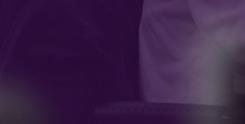



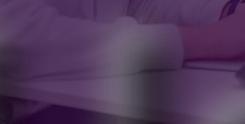
















postdocs here on both campuses,” Canton said.
“We’re very proud of the work we did, and we’re very excited to have other postdocs join this e ort,” Canton said. “I know a lot of us are motivated. It’s a pre y universal sentiment that the working conditions and the pay we have right now are not adequate.”
Regardless of the demonstrated support, NU administration refused to consider their requests, according to Canton.
Many postdocs say while they were hopeful ahead of the decision because of the recent success of postdocs at Princeton University, they were not surprised by this response.
“I was still hoping that at least some sort of discussion would have been opened about this,” postdoctoral researcher Julia Fadjukov said. “I think many share the sentiment that it’s not surprising, but (are) still sad and feeling rejection from the University.”
is denial, Canton said, drove the postdocs to plan a card campaign for November. eir goal is to collect signatures of 30% of the potential bargaining unit on anonymous cards, indicating they would like to unionize.
e cards will then be sent to the National Labor Relations Board for approval. If NU does not voluntarily recognize the union, support obtained from the NLRB will trigger an election amongst NU postdocs to decide whether to unionize.
“ is is important for the future of academia and for the future postdocs that are going to come here,” postdoctoral researcher Valentina OliveraPasilio said.
Although only 30% of the bargaining unit is needed, the NU postdocs aim to have 60% of the unit sign the cards.
e postdocs expect that approval from the NLRB will trigger an election and are hopeful that elections will take place early 2025 is comes on the heels of the Northwestern University Graduate Workers union voting to ratify a three-year tentative contract with the University in March that raised its base stipends and brought new bene ts for workers. at contract was the product of months of drawn-out negotiations with the University over the terms of a new contract.
“What is going to help with this is if we will actually get a seat at that table and force the University to even discuss this with us,” Fadjukov said. leahschroeder2026@u.northwestern.edu
From page 1
as increased noise levels, she said. Davis is the former vice president of the Most Livable City Association, which sued Evanston for approving Ryan Field concerts in a tie-breaking vote. Davis is also the chair of the “Be er an Biss” political commi ee.
Davis said she advocated for the community bene ts agreement between NU and Evanston, which commi ed $100 million to fund city initiatives over the next 10 years.
From page 1
Daily that the Evanston area needs to connect its trails and improve bike access on its streets.
But the group has also pushed to bring more cyclists into the fold.
Kate Lauderbaugh went to her rst Evanston Rides on Tuesday. She calls biking a hobby.
“We have a beautiful spot here by the lake,” Lauderbaugh said. “And I love to just go in the evening and take in the sights.”
From page 1
resemble a curated version of institutional neutrality with a separate emphasis on the independence of academic discourse on paper.
One of the policy’s stipulations is that members of the NU community should not make o cial statements on behalf of the University or its constituent parts, which the commi ee cautioned could constitute “coercion.” In avoiding that possibility, the commi ee aims to allow students and faculty members to have more individualistic academic voices on paper.
“It’s an internally directed idea, rather than an external one,” said Communication Prof. Mary Zimmerman, who was one of the 11 members on the commi ee. “It’s about if a department chair or head of a program or a president of the University says, ‘I am speaking for us or for our department,’ there is always the possibility that coercion is involved.”
In the last year, a number of elite universities, including Harvard University, Stanford University and the University of Pennsylvania, have similarly enacted their own institutional neutrality policies.
If elected, Davis aims to build more a ordable housing, collaborate with other councilmembers to improve city services and increase transparency in city government, she said.
Mundy, a former U.S. naval o cer and Director of reat and Vulnerability for Chicago, hopes to promote small businesses and “develop mutual respect between community members and the university,” he said.
“My goal is to hope to reset the tone of the conversation with Northwestern largely to one that’s productive for the community,” Mundy said.
In June, City Council approved a resolution to
Tuesday’s route traveled out from downtown toward the Skokie border. e cyclists then rode through northwest Evanston and past Northwestern. A er about an hour and 15 minutes, they returned to Fountain Square just past 7 p.m.
Fervoy said he hopes Evanston Rides will ride again next year.
“We didn’t really know what to expect with this rst organized and highly publicized group of rides,” he said. “It’s based on what we’ve seen in other cities with runners and runner clubs gathering.”
e very reason for this limitation is our rm commitment to values about which we are not neutral: fostering open and equitable dialogue and advancing the University’s core mission — the pursuit of knowledge in the service of truth,” the commi ee’s statement reads.
Most of the institutional neutrality policies that have since emerged are largely based on the Kalven Report, a 1967 statement from the University of Chicago regulating its own institutional speech, experts say.
“For Northwestern, it was a di cult move to make because of how dividing the issue between Israel and Palestine was, and many university presidents didn’t want to speak out then,” said Tom Ginsburg, the Leo Spitz Distinguished Service Professor of International Law at UChicago. “But like many schools, Northwestern is moving in our direction.”
While the commi ee said its statement isn’t “a simplistic vision of university neutrality,” it crucially mirrors Schill’s previous messages to the NU community that the University should not speak on behalf of students, sta or faculty on controversial issues that impact its “core mission.”
Nonetheless, the commi ee’s decision to only

establish ranked choice voting in all future municipal elections, beginning in 2025 e resolution says Evanston’s home rule authority allows the city to move forward without changes to state election laws. In a June statement to the Chicago Tribune, the Cook County Clerk’s O ce disagreed, leaving the voting method uncertain for the upcoming municipal elections.
With ballot nomination petitions due Oct. 28, time remains for new candidates to emerge in the race for the 7th Ward Council seat.
isaiahsteinberg2027@u.northwestern.edu
Back at Fountain Square, Tuesday’s social ride hadn’t quite ended. After a round of thanks to organizers, the cyclists turned toward a happy hour at Bat 17 , a few downtown blocks away.
Evanston Rides’ rst year neared its close, but its celebration of cycling had just begun.
“We’ve had mostly good luck with the weather,” Fervoy said. “We haven’t lost anyone to injury. And we see familiar faces.”
shungraves2027@u.northwestern.edu
reduce the scope for the University to weigh on ma ers that solely a ect its institution sets a lo y criteria. at move appears to be even more narrow than the Kalven Report, according to Robert Post, Sterling Professor of Law at Yale University.
“If I say the exception should be statements that refer to the mission of the university, it’s much broader than what they’ve wri en (in the statement),” Post said. “ is is very narrow, and it would all depend on how you gloss the phrase.”
Some members of the NU community have already applauded the statement and consider the move important to create a precedent laid out for the University years to come.
Pritzker Prof. Andrew Koppelman said universities shouldn’t have to resort to a public statement to defend their interests.
“It’s antithetical to the mission of the university to the extent that it lays down an o cial line, prepackaged for the students, instead of forcing the students to do the di cult work guring out what they think about ma ers that reasonable people disagree about,” Koppelman said.
jerrywu2027@u.northwestern.edu




By CASSIE SUN daily senior staffer @cassiesunl
TurboLearn AI has grown to half a million users between the browser version and the mobile app since its launch in December.
e AI-powered note-taking platform automatically creates notes, ashcards and quizzes from recordings of lectures.
For the rst two weeks a er the launch of TurboLearn AI, the only marketing strategy cofounders Weinberg sophomore Rudy Arora and Duke University sophomore Sarthak Dhawan could a ord was making TikToks together.
“Honestly, if it was three more weeks and nothing went viral, I would have just moved on to another idea,” Arora said.
Out of the more than 40 TikToks they recorded, one took o , gaining millions of views. It would soon set o a series of viral videos that generated enough funds from new sign-ups to hire in uencers to grow the user base, Arora said.
At VentureCat 2024, Northwestern’s annual student startup competition, TurboLearn AI won the grand prize of $100,000
Arora credited the marketing strategies he used to promote TurboLearn AI to approaches he learned from a psychology class.
“A moderately funny video is more e ective at converting customers than a very funny video,” said Arora. “As funniness increases, conversion decreases a er a certain threshold. at’s something I actually use — tone down the humor of some of my posts.”
TurboLearn AI is Arora and Dhawan’s second startup together a er they built an app that allowed homeowners to e ciently hire Christmas lights installers.
e idea behind TurboLearn AI originated from a personal need for a tool that allowed students to actively listen in class while simultaneously generating notes, Dhawan said. He recalled using AI to create ashcards to memorize content for classes in high school.
“I would use the output that GPT generated to import ashcards into Quizlet, so I wouldn’t have to create ashcards myself,” Dhawan said. “I was talking to Rudy at the time, and we thought, why not do this for lectures and PDFs?”

e most basic plan of TurboLearn AI is free to use, but users can upgrade to unlimited or pro for more bene ts.
Weinberg sophomore Ishan Chawla said he primarily uses TurboLearn AI for his humanities classes, where professors o en lecture without writing down notes on the board.
“I don’t use it as a substitute for taking notes during lectures,” Chawla said. “I use it as an addon, so whenever I miss something, I can go back to my TurboLearn notes and see speci cally what that was on.”
As the platform rises in popularity, Arora said he’s weary of copycat companies in the industry.
While many AI-based educational tools for essay editing or solving problems have cropped up in recent years, they are o en used for plagiarism and cheating. So, universities have commonly
refused to partner with these services, resulting in companies turning to other ways to expand, Arora said.
“So they look into, ‘OK, I have a talented team. Where am I going to pivot?,’” he said. “And they all pick AI note-taker.”
But unique features set TurboLearn AI apart from other AI note-taking so wares, Arora said.
Speci cally, TurboLearn AI has privacy protections set in place that address professors’ concerns about being recorded during lecture.
“Schools value their intellectual property when it comes to teaching, so (TurboLearn) doesn’t store recordings and doesn’t allow users to see recordings,” Arora said.
ough the majority of TurboLearn AI users are students, Arora said he hopes to implement more contracts with educational institutions. Under
TurboLearn AI’s institutional plan, professors could record and edit their lectures’ transcripts and send them to students.
Arora said he received a supportive response about TurboLearn AI at an NU Board of Trustees meeting.
As AI becomes more integrated into classrooms, Arora said that the creation of an automatic note-taking tool is inevitable. He aims to ensure TurboLearn is the instrument used to help students.
“Regardless of who is the one doing it, it’s going to happen anyway,” said Arora. “I’m trying to do it in a way that’s ethical and actually helping students, and it’s a tool that can be used for learning rather than cheating.”
cassiesun2027@u.northwestern.edu
Spring 2024 | An independent voice since 1923 | Evanston, Illinois
EDITOR IN CHIEF | Jacob Wendler
PRINT MANAGING EDITORS | Lily Ogburn, Joyce Li, William Tong
DIGITAL MANAGING EDITORS | Carlotta Angiolillo, Sasha Draeger-Mazer
CAMPUS EDITOR | Jerry Wu
ASSISTANT EDITORS | Cassie Sun, Nineth Kanieski Koso, Janelle Mella
CITY EDITOR | Shreya Srinivasan
ASSISTANT EDITORS | Isaiah Steinberg, Naomi Taxay, Femi Horrall
SPORTS EDITOR | Henry Frieman
OPINION EDITOR | Nora Collins
ASSISTANT EDITOR | Mika Ellison
A&E EDITOR | Betsy Lecy
ASSISTANT EDITORS | Alexander Hernandez Gonzalez, Karina Eid
IN FOCUS EDITORS | Casey He, Beatrice Villaflor
AUDIO EDITOR | Edward Simon Cruz
ASSISTANT EDITOR | Jacob Hare, Shae Lake
VIDEO EDITOR | Ashley Lee
PHOTO EDITOR | Shun Graves
ILLUSTRATIONS EDITOR | Iliana Garner
ASSISTANT EDITORS | Shveta Shah
DATA VISUALIZATION EDITOR | Charlie Spungin
DESIGN EDITORS | Danny O’Grady, Paloma Leone-Getten
ASSISTANT EDITORS | Micah Sandy, Rachel Schlueter
AUDIENCE ENGAGEMENT EDITOR | Jillian Moore
SOCIAL MEDIA EDITOR | Kelley Lu
ASSISTANT EDITOR | Sejal Mehta
POLLING EDITOR | Scott Hwang
NEWSLETTER EDITOR | Rachel Schlueter
ASSISTANT EDITOR | Misha Oberoi
WEB DEVELOPER | Yong-Yu Huang
COPY CHIEF | Grace Wu
COPY EDITORS | Sarah Serota, Jane Yu, Lydia Plahn
STAFF EDITOR | Charlotte Ehrlich
DEVELOPMENT AND RECRUITMENT EDITORS Nicole Markus, Anavi Prakash, Leah Schroeder, Maya Wong
DIVERSITY & INCLUSION CHAIR | Samanta Habashy, Micah Sandy
CROSSWORD & GAMES EDITOR | Lillian Ali
ASSISTANT EDITORS | Lizzie Ferrazza
STIPEND COORDINATOR | Micah Sandy
GENERAL MANAGER | Stacia Campbell
SHOP MANAGER | Chris Widman
BUSINESS OFFICE STAFF
Jenny Aguilar, Jose Blancarte Ramirez, Branden Chen, Jonathan Fang, Mia Schmitt, Kevin Tang
ADVERTISING PRODUCTION STAFF
Christina Feng, Sammi Li
Wednesday, October 2, 2024
WOMEN’S TENNIS
By CHARLIE SPUNGIN daily senior staffer @charliespungin
Northwestern women’s tennis coach Claire Pollard receives an influx of emails on a daily basis from players across the globe. Each player’s goal is the same: to wear purple and black on Pollard’s squad.
Pollard’s experienced eye for talent means only select players meet the five-time Big Ten Coach of the Year’s standard.
In April 2023 , Pollard received an email from Mika Dagan Fruchtman, then a 19 -yearold from Israel. It didn’t take her long to realize Dagan Fruchtman’s film differed from most.
“I liked everything I saw,” Pollard said. “She’s athletic. She’s strong. She’s powerful … And you could see she kind of wears her heart a little bit on her sleeve.”
Pollard said she saw great ball striking and agility. She marveled at a skilled all-court player with sensational striking ability and agility — a trailblazing competitor who’d been Israel’s top youth player for years. She quickly responded to Dagan Fruchtman, and the next day, the two spoke over the phone.
About 6 , 000 miles apart, the nationally renowned talent developer and young phenom struck a quick connection.
“We started talking, and I was really interested because the coach sounds amazing,” Dagan Fruchtman said. “I think even before my visit over there, I kind of felt that’s the right place to me. … It just felt different.”
As Dagan Fruchtman grew older, her desire to play college tennis in the United States surged. She knew she could find premier education and coaching across the Atlantic Ocean.
Less than a month after contacting Pollard, Dagan Fruchtman stepped foot in Evanston for an official visit to NU.
A standard Pollard recruiting visit gives recruits a holistic experience of what it’s like to be a Wildcat. Not only do they see facilities and practices, but they are also invited into the Pollard household for team dinners.
In Evanston, Dagan Fruchtman saw a team — players and coaches alike — who love to be around each other, both on the court in Combe Tennis Center and off the court in Pollard’s living room.
“It’s more than a team,” Dagan Fruchtman said. “It’s like a family — a family who loves

sports and supports you.”
While the path was far from linear, Pollard and Dagan Fruchtman would eventually bridge the intercontinental gap, as Dagan Fruchtman would soon become the first Israel native to play for Pollard’s squad since Lee Or in 2019
***
Dagan Fruchtman left Evanston without an offer. Pollard loved what she saw from Dagan Fruchtman, the person — her outgoing, mature and charismatic personality — but it wasn’t enough. She needed to see more of Dagan Fruchtman, the tennis player.
For Pollard, seeing her recruits play in person is a non-negotiable factor.
“From a video, it is really easy to say no and almost impossible to say yes,” she said. “I will not take someone just on a video. I just won’t do it.”
One month after Dagan Fruchtman visited campus, assistant coach Ellyse Hamlin touched down in Nakhon Si Thammarat, Thailand, where Dagan Fruchtman was playing in a professional tournament.
Hamlin watched as Dagan Fruchtman played point after point, weighing whether to give the Israeli prodigy an offer. Although she only watched Dagan Fruchtman play one singles match in a first-round 6 - 3 , 7 - 6 ( 3 ) loss, it was enough. What Hamlin saw on the court outweighed the match’s scoreline.
“I loved her passion that she exudes when she plays,” Hamlin said. “I loved her competitiveness. I loved her attitude. She can come forward. She hits a great ball and moves really well, hustling and running down every ball.”
After Dagan Fruchtman’s match, Hamlin knew the call. Dagan Fruchtman embodied everything that NU preached on and off the tennis court. Extending her an offer was a no-brainer, “a big decision but an easy one,” she said.
Hamlin’s Nakhon Si Thammarat trip proved to be a resounding success. Halfway across the world from Evanston, Dagan Fruchtman began envisioning herself as a Wildcat.
“(Ellyse) gave me good advice, and I had a really good time with her,” she said. “I felt like she was a friend and the coach, not just a coach. She was trying really to get to know me, the way I play and the way I think.”
On June 12, while still in Nakhon Si ammarat and four days a er Hamlin le , Dagan Fruchtman verbally commi ed to play for the ’Cats. ***
Nearly three years before Dagan Fruchtman committed to NU, Israel and the United Arab Emirates signed a historic normalization agreement in September 2020 . It established formal relations between the nations, allowing for the exchange of ambassadors, tourism and commercial flights.
Growing up in Ra’anana, Israel, Dagan Fruchtman never envisioned being in the UAE. She had only seen Dubai’s bustling skyline in pictures, and traveling to the Emirates from Israel was nearly impossible. It wasn’t until August 2020 that the first commercial flight traveled from Tel Aviv to Abu Dhabi.
When December 2020 came around, then17 -year-old Dagan Fruchtman was in Dubai for the biggest tennis tournament of her career. In the process, she became the first Israeli tennis player to play in the UAE following the agreement.


Amid profound geopolitical changes between the countries, the Israel Tennis & Education Centers Foundation hoped for an Israeli to play tennis in the UAE. By speaking to organizers of a W 100 tournament –– the highest-level ITF tournament classification –– in Dubai, they secured a wildcard for an Israeli player.
“It was either me, the younger player who might have a good future, or the No. 1 seed in the country,” Dagan Fruchtman said. “The manager of the Tennis Center decided to give it to me. He believed in me, so it was a really good feeling.”
Eleven years earlier, Israeli tennis legend and three-time Grand Slam doubles champion Andy Ram played an ATP tournament in Dubai. Ram’s experience was far from his normal tournament routine. He played under a false name without the Israeli flag next to his name on the court. He had constant security at his bulletproof hotel.
Ram joined Dagan Fruchtman on the trip to Dubai in 2020 and saw a world of differences in the UAE’s largest city. There were no false
names, constant bodyguards or omissions of Israel’s flag.
“People ask where you’re from, and once you say you’re from Israel, it hits different,” Dagan Fruchtman said. “They were really respectful about it and loving. They didn’t judge us.”
Dagan Fruchtman’s opponent in the first round of qualifying retired late in the first set. Then, she advanced to the main draw with a decisive 7 - 5 , 2 - 6 , [ 10 - 8 ] victory.
Her run ended in the first round of the main draw with a 6 - 3 , 6 - 1 loss, but Dagan Fruchtman’s week in Dubai became imprinted in Israeli sports history.
“It was more than tennis,” Dagan Fruchtman said. “It was a really, really special feeling. (People) were very welcoming and loving and giving, so I think it was one of the most special experiences that I had in my life.”
For years, Dagan Fruchtman played matches with the Israeli flag next to her name, but she only represented herself on the court.
That changed when she was 15 years old. Between July 2018 and July 2019 , she wore blue and white for Israel three times — twice in the 16 & Under European Summer Cup and once in the 16 & Under Tennis Europe Winter Cup.
“Representing my country and growing up here all my life, you’re getting to the best place you can get for me,” Dagan Fruchtman said. “Playing tennis for Israel, for my country, for the place that I’m from, and to be one of the best, it’s a really big feeling.”



helpful to get the best pro career,” Dagan Fruchtman said. “I feel like I didn’t have the chance to get to be the best version of a player. I feel like at Northwestern, I’m going to have a great team and great coaches. I have a great chance to get much, much better.”
Her inevitable return to representing Israel on the tennis court also came during her service. In 2022 and 2023 , she represented Israel in the Billie Jean King Cup, the highest level of team tennis competition.
“You feel like you’ve made it,” she said. “That’s the best thing you have to represent your country. Just to play under a flag, not under your name, is a different feeling. You’re going to do the absolute best and anything you can just to win a match because it’s just more than tennis in those kinds of events.”
When Dagan Fruchtman takes the court for the ’Cats this fall, she will utilize lessons learned in international and professional play. Looking forward, Pollard said she’s ecstatic to have Dagan Fruchtman on her squad, as she has high hopes for the freshman to enjoy a fruitful four-year career in Evanston.
“I hope we can help her become an NCAA qualifier,” Pollard said. “I think she’s going to help contribute and lead us to Big Ten titles … And I definitely think All-American is definitely attainable.”
Dagan Fruchtman’s service ended in December 2023 . With four years of college tennis ahead of her, she looks forward to maximizing her opportunity. As she’s done throughout her athletic career, Dagan Fruchtman knows she’ll be a winner.
“My personality is a fighter on court,” Dagan Fruchtman said. “I don’t want to lose.
blood, I’m not going to retire.”







devote to the sport. sion for the game force in U
Dagan Fruchtman picked up a tennis racket for the first time at seven years old. Then, she only saw tennis as a fun biweekly after-school activity with her friend and his father, never imagining the amount of time and effort she would Her her passoon balbecame a Israel, winning national champiship and capturing the 18 U national championship twice. Her success in Israel led her to compete in youth European championships in the Czech Republic and Russia.
Dagan Fruchtman won her ITF juniors career. She hoisted trophies as close to home as Tel Aviv and as far as Chandigarh, India. In October her first professional final in Cancún, Mexico.
“Tennis just got to my life in a surprise,” Dagan Fruchtman said. “I was doing track, a little surfing, a little basketball but no connection to tennis. My family didn’t have a clue about tennis. They didn’t see the Grand Slams or stuff like that.”

As her professional career bloomed, Dagan Fruchtman found a new way to serve her country. In December her compulsory two-year Israel Defense Forces service.

Due to her success on the court, she was granted Outstanding Athlete status in the IDF. That limited her army service to a maximum of four to six hours per day in a non-combat role. She had up to 150 compete in tennis tournaments, although she needed permission to do so.






“On my first day when I got to the army, (my commander) was like, ‘First of all, you are a soldier and then you are an athlete,’” Dagan Fruchtman said. “I was like, ‘You’re confused. You’re very confused. First of all, I’m an athlete, then I have a family, then I have friends, and then I’m a soldier.’”
Tennis and service became her life. She woke up early for the military and subsequently returned to the courts for her second out after her service.




Pollard’s staff recruited her while she was juggling the IDF and a professional tennis career. She committed to NU during her conscription.

“The army in Israel is not very
charliespungin2027@u.northwestern.edu
